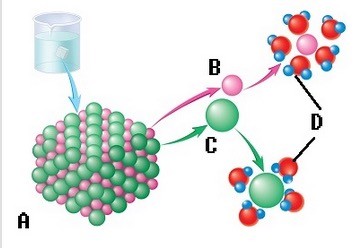 The sodium chloride molecule breaks apart in water. What does "B" represent?
The sodium chloride molecule breaks apart in water. What does "B" represent?
A. Chloride ion
B. Sodium ion
C. Dissociation
D. Water molecule
E. Salt crystal
Answer: B
You might also like to view...
The ________ triangle of the neck is bounded by the sternocleidomastoid, omohyoid, and posterior digastric muscles. Palpation here will allow one to feel the pulsation of the common ________ artery. (Same word for both blanks).
Fill in the blank(s) with the appropriate word(s).
Water loss through the epidermis could cause a serious threat to health and well-being. Which of the following protects us against excessive water loss through the skin?
A) Glycolipids that are secreted by keratinocytes into extracellular spaces. B) The dermis is the thickest portion of the skin and water cannot pass through it. C) Fat associated with skin prevents water loss. D) The size and shape of the cells that make up the stratum spinosum, as well as the thick bundles of intermediate filaments.
Vital centers for the control of heart rate, respiration, and blood pressure are located in the ________
A) cerebrum B) medulla oblongata C) midbrain D) pons
High blood glucose levels cause an increased secretion of ________.
A. erythropoietin B. calcitonin C. insulin D. glucagon E. growth hormone